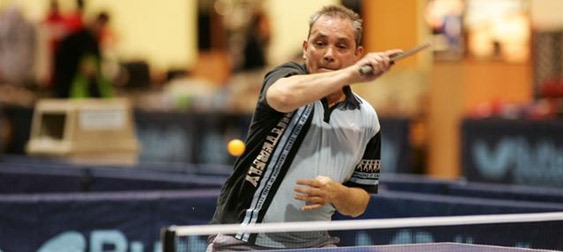Reading the Ball
Butterfly Table Tennis Coaching
by Francisco Mendez
Through the years, table tennis development has experienced significant changes. Our sport is so sophisticated, and the accuracy of the techniques so difficult, that these characteristics may be part of the reason table tennis is not a popular sport. Ironically, the recreational face of this sport, ping-pong, is popular. Hundreds of thousands have tables and play at home. Nonetheless, it is its complexity that makes this sport so beautiful and magical.
Among the great factors of Table Tennis are Spin, Speed and Placement. Spin is the most complex, the most controversial, and perhaps the most important of the three due to its variety, disguise and difficulty in dealing with.
“Reading the ball” is the player’s capacity and ability to know and identify the following information:
- Type of spin
- Amount or intensity of spin
- Trajectory of the ball or type of curve in the air
- Speed.
It also includes:
- Height & depth of the ball
- Bouncing effect on the table.
Development and mastery of the skills required to read the ball takes years of practice. Complicating this task further, we have to add other difficulties:
- Hidden serves (these was outlawed as of Sept. 1, 2002)
- Diversity of rubbers breaking the spin pattern
- Players that have mastered the art of deceptive spin
For all this, Reading the Ball is extremely important during the point, especially when receiving, as every point starts with a serve. Following are some basic and advanced steps to develop a good reading of the ball.
A. Watch the Movement of the Opponent’s Arm and Bat When Contacting the Ball
This method is the most basic and important one. Mainly, it will help you know the type of spin on the ball. (Don’t forget that each player has a different way to serve, spin, and hit the ball – not to mention the capacity to disguise spin with body movement.)
B. Watch the Way the Opponent Brushes the Ball at Contact
This is particularly effective in determining the amount of spin. Remember, it is not enough to know the type of spin; you also need to know the amount or intensity of spin.
C. Watch the Label on the Ball
This method is a good but advanced one to help detect serves with ‘no spin,’ ‘dead ball,’ or ‘very little spin.’ If you can see the label on the ball, you know it’s coming with little or no spin.
D. Wait for the Bounce of the Ball
This method is very effective for curvy serves and serves with a lot of bouncing curve, like the ‘side topspin serve’ and the ‘side backspin serve.’ For these serves, it is best to wait until the ball bounces on your side of the table to make your final spin determination. You will have more time and less spin effect. For short serves, you will typically want to hit the ball at the height of the bounce. Top players, however, can return the serve in many different ways.
E. Listen to the Sound at Contact
During the seventies and part of the eighties (until 1983 when the rule was changed), some players used two different rubbers (one side long-pips or anti, and the other side sticky inverted) of the same color. Liang Ke-liang, John Hilton, Huang Liang, Cai Zhenhua, and many others switched the side of the racquet under the table when serving in order to deceive the opponent. Such difficulty in determining spin forced players to develop new techniques to assist in reading the ball. Chief among them were watching the ball’s label and listening to the sound of the ball at impact. It is important to distinguish between a ‘Contact Sound’ and a ‘Brushing Sound.’ When you hear a ‘contact sound,’ the ball will be coming with little or no spin. When a ‘brushing sound’ is heard, a spinnier ball is coming as the ball has been grazed. Of course, serving players understand that you may be listening and may stomp a foot while serving in order to confuse the sound at impact.
Francisco Mendez, 9 times Mexican Champion, ITTF and USATT certified Coach























